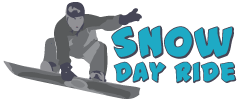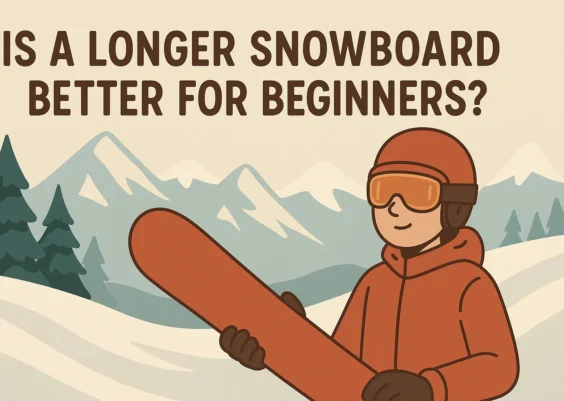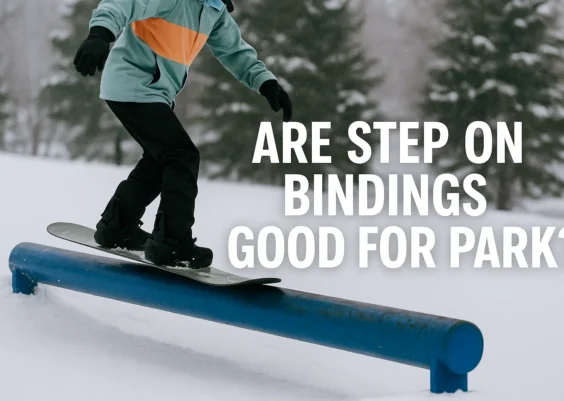Quick Facts
- Shorter snowboards turn quickly and feel easier for new riders.
- Longer snowboards stay stable at higher speeds and steep slopes.
- Freestyle boards are usually shorter for spins and park tricks.
- Freeride boards are longer to handle deep snow and carving.
- Proper board size depends on your weight, height, and boot size.
Snowboard size has a big impact on how the board feels under your feet. A shorter snowboard is easier to move around, which helps with learning, quick turns, and freestyle tricks. Riders often find it lighter and more forgiving, especially at slower speeds.
A longer snowboard, by comparison, feels stronger and more stable when riding fast or in deep powder. Choosing the right size depends on your skill, body type, and the way you like to ride.
In this guide, we’ll look closely to look for the answer on “Is a shorter board easier to ride?” and when a longer board makes more sense.
Answered: Is a Shorter Snowboard Easier to Ride?
A shorter snowboard is easier to ride for most beginners and freestyle riders. The reduced length makes turning smoother and less effort is needed to control the board. Shorter boards also respond faster, which helps in terrain parks or when practicing spins.
But shorter snowboards are not always the best choice. At high speeds, they can feel shaky and less reliable. In powder snow, they sink more easily, which makes them harder to handle. Longer boards give stability and float that shorter boards cannot match.
The easiest board depends on where you ride, how fast you go, and what style you enjoy most.
Is a Shorter Snowboard Easier for Beginners?
Yes, beginners usually find shorter snowboards easier to ride. The reduced length makes the board lighter and more responsive, which helps new riders learn turns faster. Shorter boards are also more forgiving, so small mistakes don’t throw the rider off balance as easily.
Most instructors suggest sizing 2–4 cm below the standard chart for beginners. For example, a rider weighing 150 pounds might pick a 152 cm board instead of 156 cm. This small difference can improve comfort and speed up the learning process.
As skills grow, many riders move to longer boards for better stability, carving, and powder performance.
Why Snowboard Size Matters?
Snowboard length changes how stable, responsive, and comfortable the ride feels. A longer board spreads your weight across more surface, which helps in powder and at high speeds. A shorter board reduces that surface, which makes it easier to pivot and turn.
Weight also plays a role. A rider who weighs 160 pounds usually matches best with a board between 154–158 cm. Someone at 120 pounds may feel better control on a board between 142–148 cm. Height adds guidance too, but weight is often more accurate when choosing.
The right size makes learning smoother, reduces falls, and improves confidence on the slopes.
Benefits of Riding a Shorter Snowboard
A shorter snowboard gives riders quicker handling and easier control. The smaller size makes turns smoother and requires less effort. This is helpful in crowded slopes where fast reactions matter.
For freestyle riders, shorter boards are a natural fit. They are lighter, making spins and jumps easier. Landing tricks also feels more forgiving since the board reacts faster. Many park riders prefer boards that are 2–4 cm shorter than their regular all-mountain size.
Beginners gain confidence faster with shorter boards. The reduced length lowers the chance of catching an edge, which cuts down on falls. For casual riders, it often feels less tiring after a long day.
Drawbacks of Riding a Shorter Snowboar
A shorter snowboard loses stability once speed increases. Riders often feel the board shake when carving fast on steep runs. This makes it harder to stay balanced at high speeds.
Shorter boards also sink more easily in deep snow. In powder conditions, the reduced surface area struggles to float, forcing riders to lean back uncomfortably. A longer board spreads weight better and glides on top of the snow.
Another drawback is edge hold. Shorter boards grip less on icy or hard-packed trails. Advanced riders who push into sharp carves often feel limited. For these reasons, freeride and backcountry riders rarely use shorter boards.
How to Choose the Right Snowboard Size
Finding the right snowboard length means matching the board to your body and riding goals. Here are the key factors:
Rider’s Height and Weight
Most charts use weight as the main guide. For example:
| Rider Weight (lbs) | Recommended Length (cm) |
|---|---|
| 100–120 | 140–146 |
| 120–140 | 144–150 |
| 140–160 | 150–156 |
| 160–180 | 156–162 |
| 180–200 | 160–166 |
| 200+ | 164+ |
Skill Level
- Beginners: Choose a board 2–4 cm shorter for easier handling.
- Advanced riders: Standard or slightly longer boards give more stability.
Riding Style
- Freestyle: Shorter boards for spins, park jumps, and playful riding.
- Freeride/Backcountry: Longer boards for speed and powder float.
- All-Mountain: Balanced length in the middle of your weight range.
Boot Size and Board Width
US men’s boot size 11 or higher often needs a wide snowboard. Too narrow and your toes or heels drag in turns.
Terrain Preference
- Groomers: Mid-length works well for control and smooth carving.
- Park: Shorter for tricks and fast reactions.
- Powder: Longer for float and stability.
FAQs
What happens if my snowboard is too short?
It feels unstable at high speed and sinks in deep snow. Short boards also limit carving strength on hard-packed trails.
Can I learn faster with a shorter snowboard?
Yes. Shorter boards turn quickly and respond with less effort, which speeds up learning.
Is a longer snowboard harder to ride?
For beginners, yes. Longer boards need more strength to turn and control at slow speeds.
What size snowboard is best for beginners?
A board 2–4 cm shorter than the standard chart makes learning easier.
How much does snowboard length really matter?
It affects stability, speed, and control. The wrong size slows progress and reduces comfort.
A shorter snowboard is easier to ride for beginners and freestyle riders because it turns quickly and feels forgiving. But it sacrifices stability at high speed and float in powder, which is where longer boards excel.
The best snowboard length is not the same for everyone. It depends on your weight, height, skill level, and the terrain you ride most often. Beginners usually benefit from going slightly shorter, while advanced riders often move toward longer boards for performance.
Think of size as a balance. Choose shorter for control and fun, longer for speed and stability. The right board will always match both your body and your riding goals.




